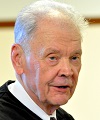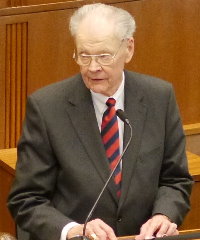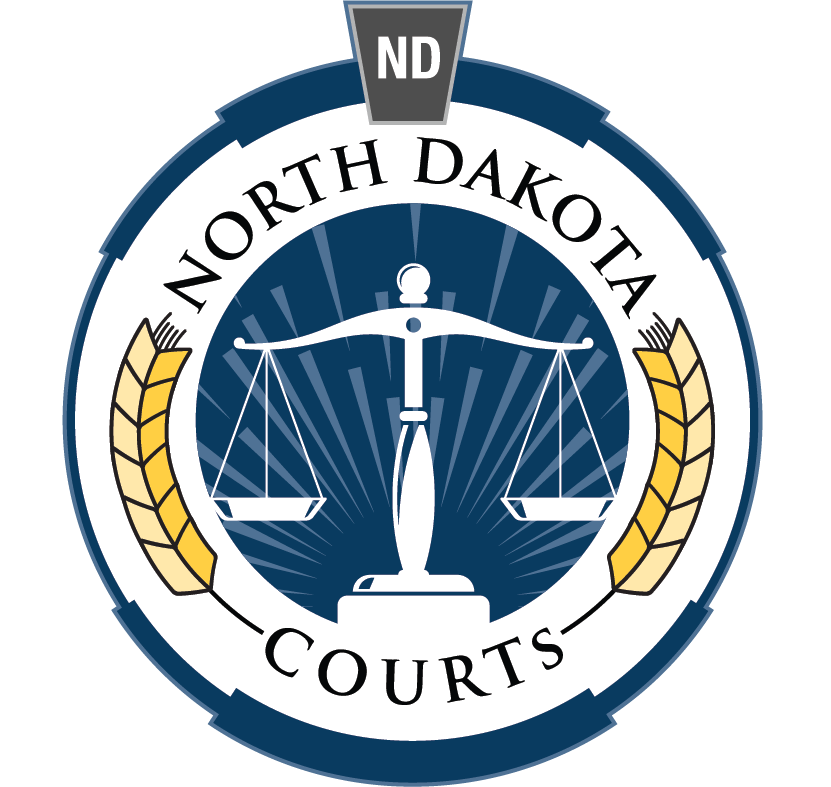State of the Judiciary
-

2025 State of the Judiciary Address
Chief Justice Jon Jensen appeared before a joint session of the 69th Legislative Assembly of North Dakota on Jan. 7 to present the State of the Judiciary address. -

2021 State of the Judiciary Address
Chief Justice Jon Jensen appeared before a joint session of the 67th Legislative Assembly of North Dakota on Jan. 5 to present the State of the Judiciary address. -

2019 State of the Judiciary Address
The North Dakota Court System should be a well-balanced, dynamic and highly functioning system that is able to continuously improve and adjust to meet challenges in all economic conditions. We must operate to treat every individual, in every part of the state, with respect and to ensure that all of our cases move through the court system in a thoughtful and timely manner. -
2017 State of the Judiciary Address
Although not delivered in its traditional format, that is more to my advantage than yours as I realize that the written page provides me greater opportunity to expound on my thoughts than does the traditional speech. -

2015 State of the Judiciary Address
Most of us learned, or should have learned in school, that in 1215 at Runnymede near Windsor Castle, King John of England sat under a tree and signed the Magna Carta, the Great Charter. That document is the foundation of Constitutional rights and liberties and is the foundation of law that the entire court system of the United States relies on even today. -
2013 State of the Judiciary Address to the Bar
I begin my remarks by acknowledging the Energy Impact Task Force Judge Hagerty formed early in her tenure as president. The report from the Task Force was presented to the Governor and the legislature prior to the legislative Assembly -
2013 State of the Judiciary Address
I begin this State of the Judiciary by observing that access to the courts and the ability to participate in one's own case are key concepts in delivering justice. We do not always meet that goal, but we remain intent on keeping open the window of opportunity for all who seek remedy in our courts. -
2012 State of the Judiciary Address
The annual report of the North Dakota Judicial System for 2011 is now published and is available for viewing on the Supreme Court's website if you are interested. I do not intend to repeat the contents of that report in these remarks. I am aware that time is limited and I do not intend to overstay my welcome. -
State of the Judiciary Report 2011
I am pleased to offer the State of the Judiciary Report to the 112th Annual Meeting of the State Bar Association. Despite what some of the younger lawyers may believe, I have not been in attendance at all 112 meetings. A few people in this room were in attendance at the same meeting I was a few weeks ago in which the speaker, a retired Law School Dean, in talking about his age said that "With age comes wisdom but sometimes age comes alone." -
State of the Judiciary Message 2011
I perhaps should not tell you this, but it may surprise you to learn that delivering a State of the Judiciary message is not a privilege all of my colleagues in other states share. I do not take this privilege for granted and I recognize your already heavy schedule. The invitation to speak to you today is indicative of the spirit of cooperation and respect that our three branches of government in our state share. I thank you for that. -
State of the Judiciary Message 2010
Clarence Darrow is quoted in the New York Times April 19, 1936, as saying "There is no such thing as justice, in or out of court." With all due respect to Mr. Darrow, I hope to prove him wrong at least with regard to access to justice in the courts. -
State of the Judiciary Message to the Bar 2009
I am pleased to be here today to deliver the Court's annual message to this assembly. I intend to outline briefly some of the matters, other than legal actions, that have occupied the Judicial Branch since I last spoke with you. We have decided to "go green" and this message has not been printed. -
State of the Judiciary Message 2009
This is the 9th State of the Judiciary message I have presented to you and the 25th Assembly of the North Dakota Legislature I have had the opportunity to observe. I do not take the privilege to appear before you lightly, and I continue to feel that sense of excitement and anticipation that, at least for me, comes with each session. -
State of the Judiciary Message 2008
In past years we have made printed copies of this message and attached to it the Annual Report of the Courts. Because both the State of the Judiciary and the Annual Report are readily accessible on the Supreme Court website, almost simultaneously with my appearance, we have not done so this year. The Supreme Court website address is: www.ndcourts.gov. -
State of the Judiciary Message to the Bar 2007
I am pleased to be here today to report on the State of the North Dakota Judiciary. I know your time is limited, so I will move right into my remarks. -
State of the Judiciary Message 2007
This past year we have been marking the thirtieth anniversary of the amendment of the North Dakota Constitution and the changes that brought to the Judicial Branch. Thirty years ago, we had a multi-tiered county and municipal court system with overlapping jurisdiction, judges without law training, and unwritten rules of court. -
State of the Judiciary Message 2006
Thirty years ago, the citizens of North Dakota voted to amend Article VI of the North Dakota Constitution. This amendment created a uniform court system and gave the Supreme Court administrative authority over the District courts and any lesser courts that may be established by law. What an act of great faith that was by the people of this state. -
State of the Judiciary Message to the Bar 2005
As I have stated in past presentations, change is ever present and it seems almost all consuming. In a quotation by E. B. White, he said, "The only sense that is common in the long run, is the sense of change - and we all instinctively avoid it." -
State of the Judiciary Message 2005
Over the entrance of the Yale Law School, there is a carved inscription that reads: "The law is a living growth, not a changeless code." So, in reviewing remarks from prior years, the focus has been on change. -
State of the Judiciary Message 2003
In our own time, much has happened since I appeared before you last legislative session. Events have occurred that are reshaping our world. Yet, our form of government, through the rule of law, not only prevails, but also provides a beacon for the free world. -
State of the Judiciary Message 2001
Chief Justice delivers State of the Judiciary Message Thank you for the privilege of appearing before you to present the State of the Judiciary Message at the beginning of a new century. We have just experienced a test of our constitutional form of government, and the rule of law prevailed. I share with you some words written by Martha Barnett, President of the American Bar Association, during the heat of the past election controversy -
State of the Judiciary Message 1999
I am pleased to again be given the opportunity to appear before you and present the message on the State of the Judiciary. One of the Chief Justices from another State who does not currently have this privilege asked me if I thought it was worthwhile. I told him I thought it was but he really should ask the legislators who sit and listen what they thought.

